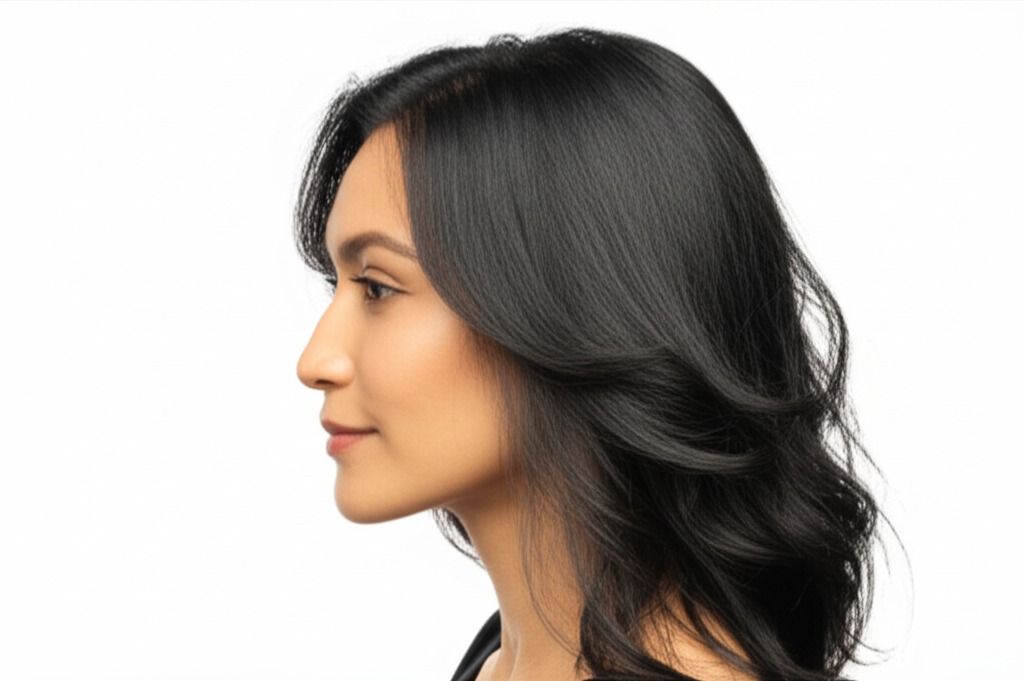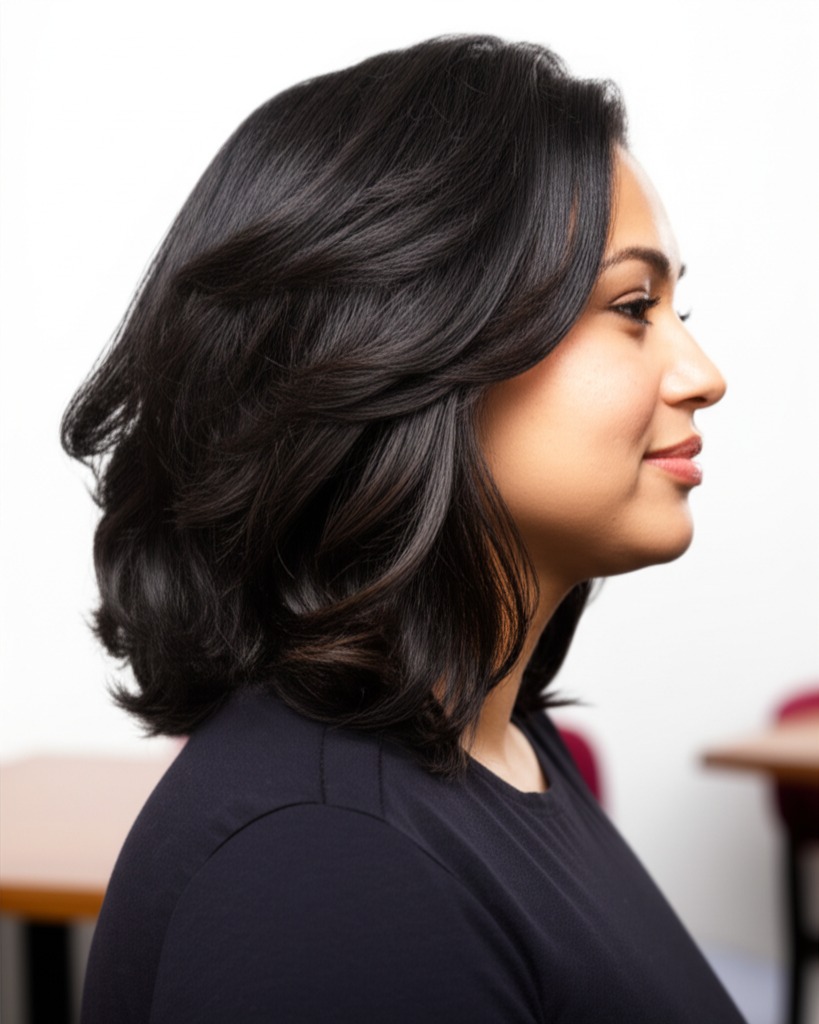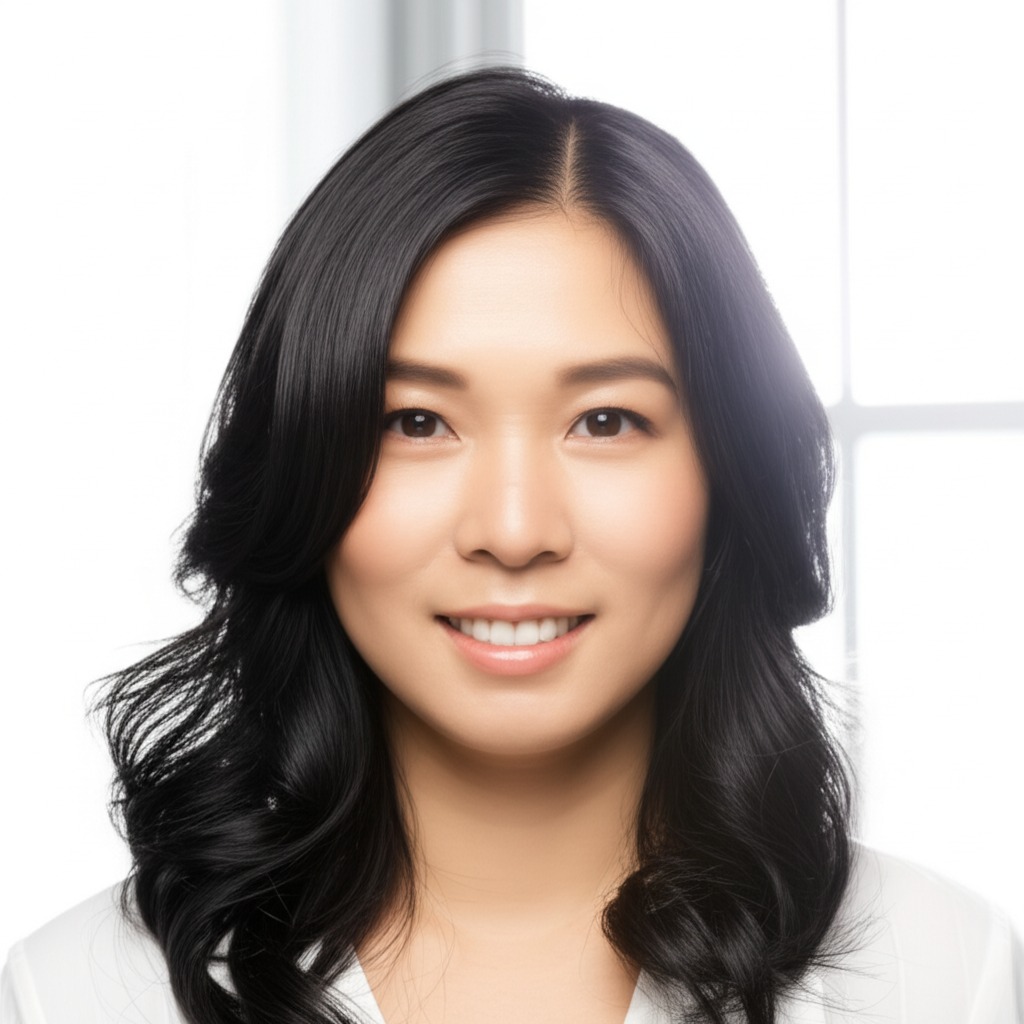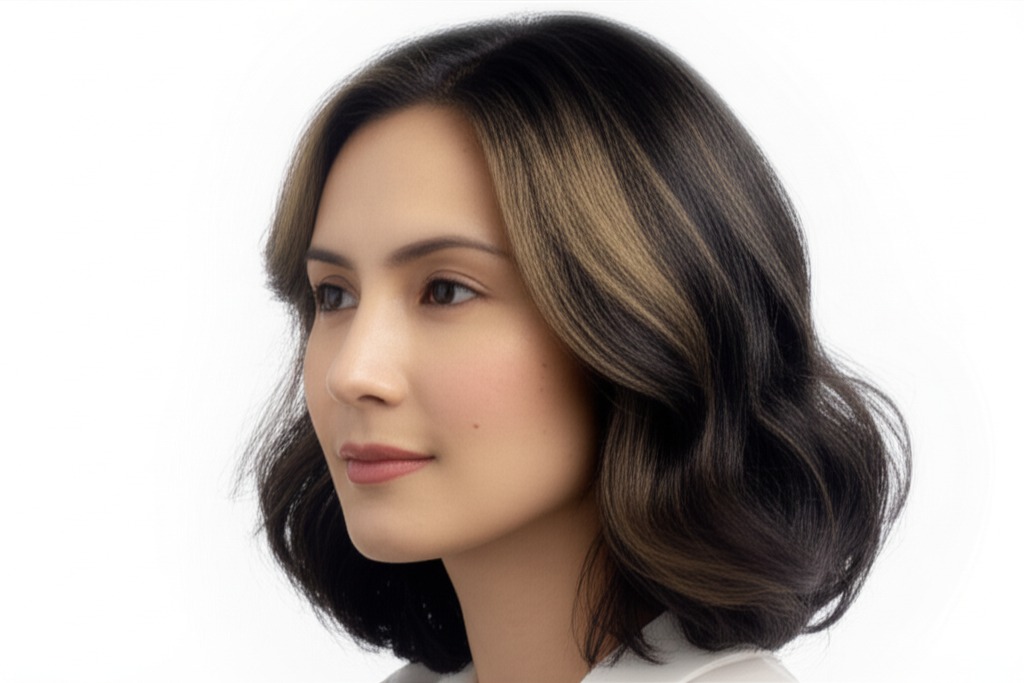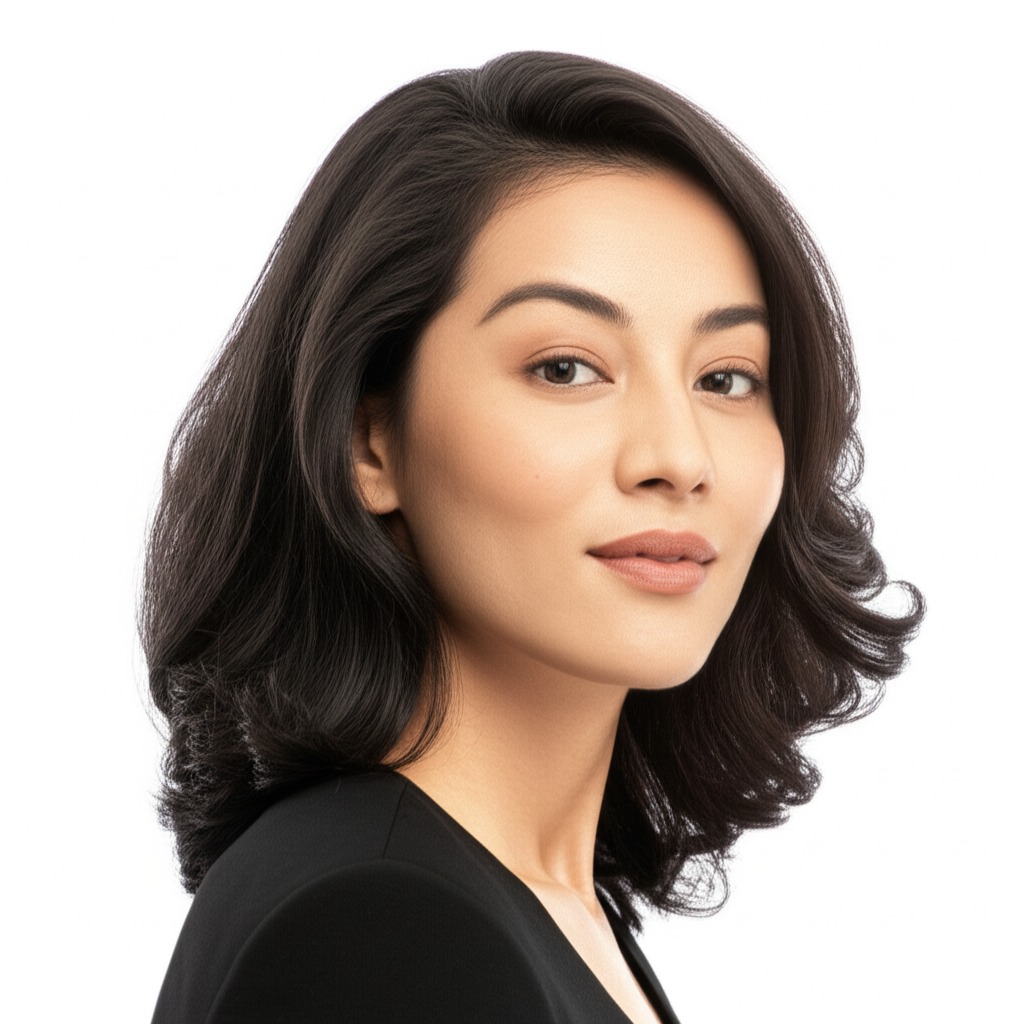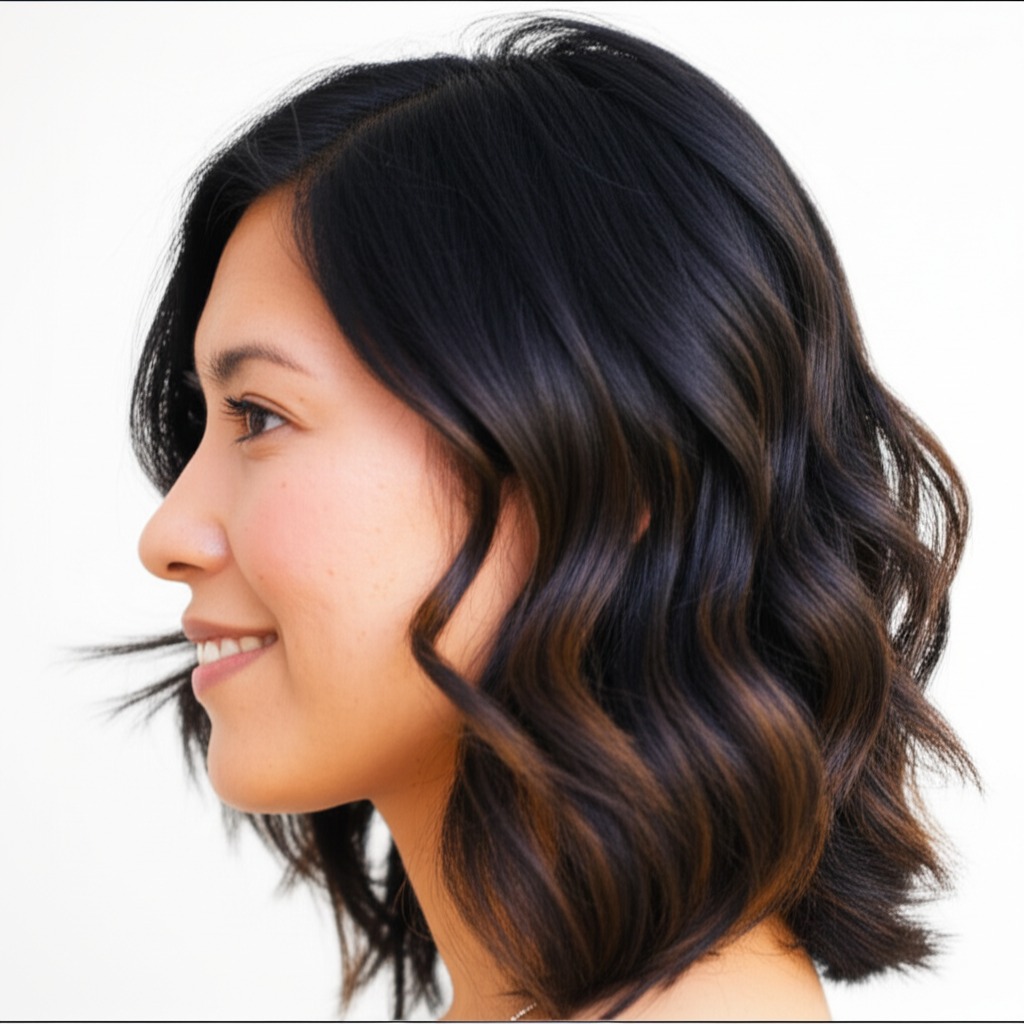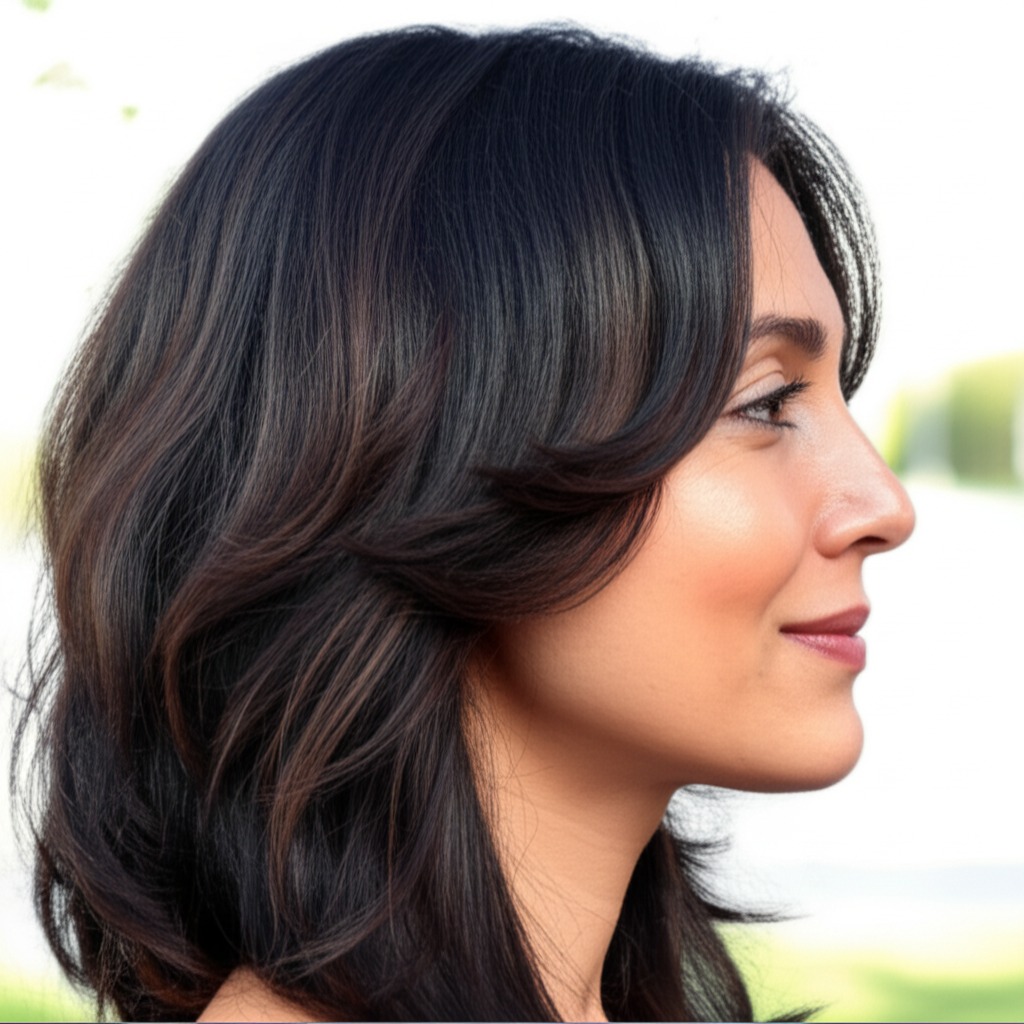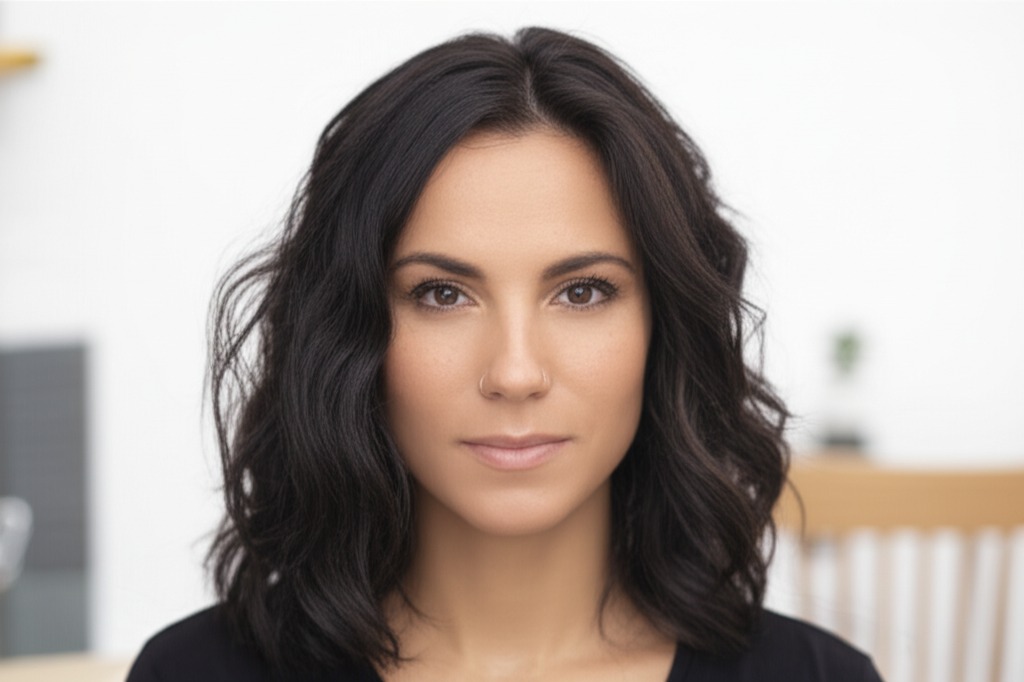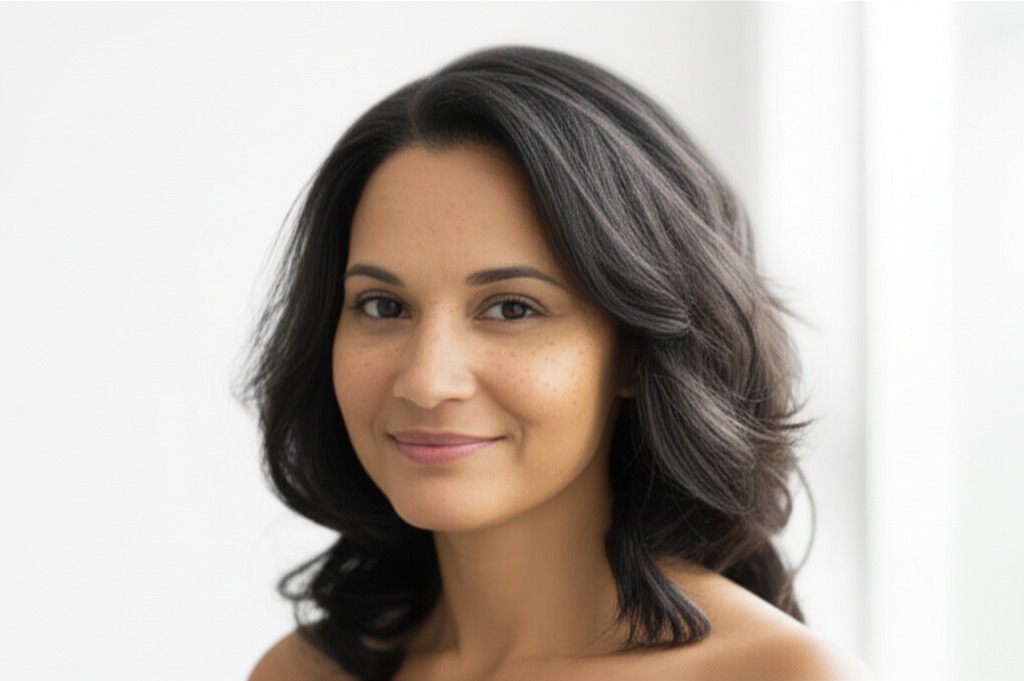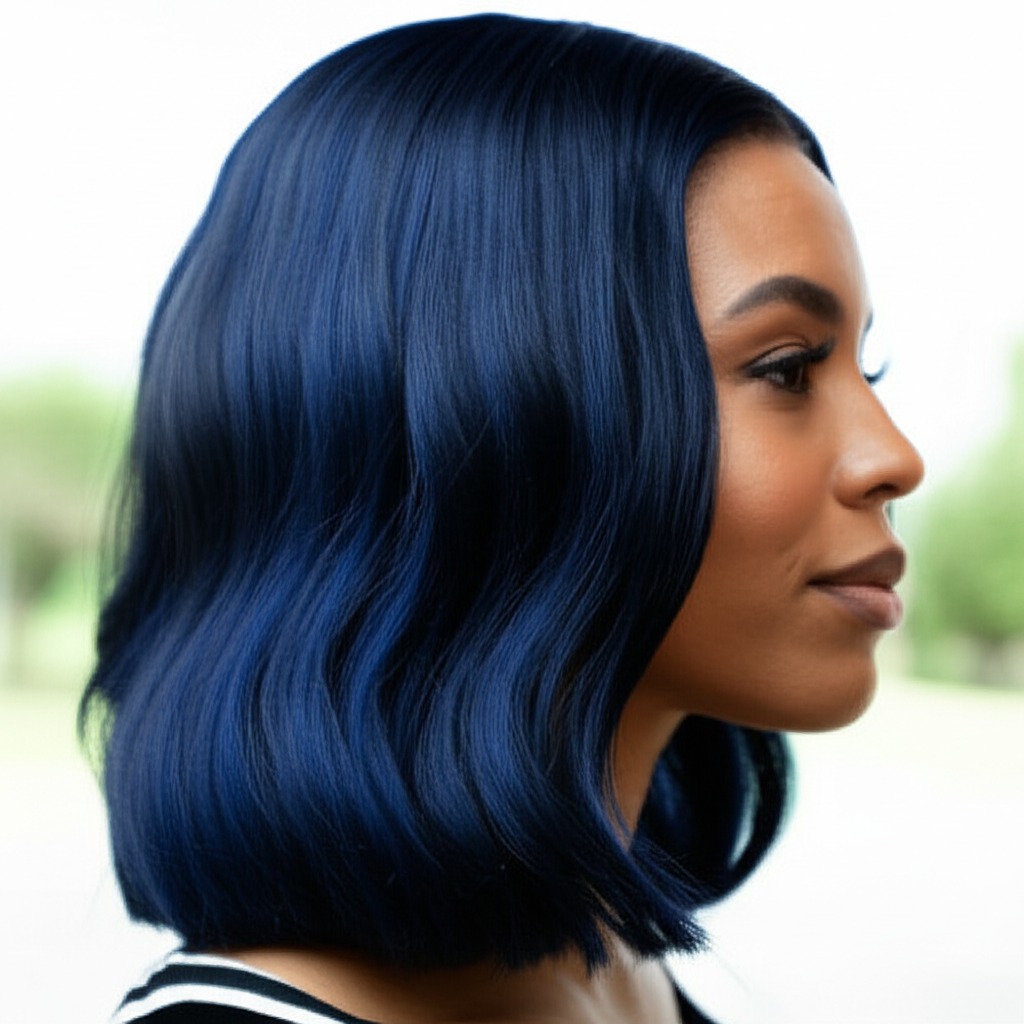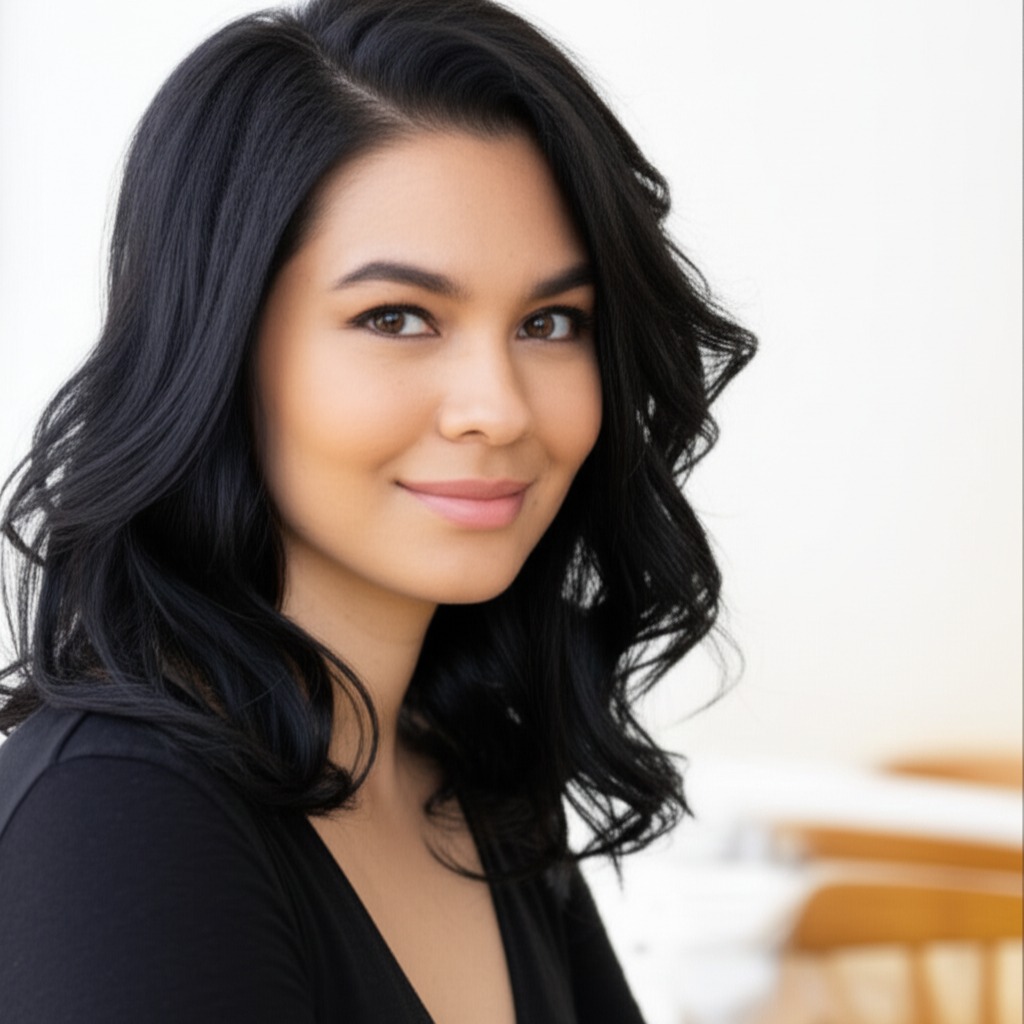#Embracing the Depth: A Guide to Natural Black Hair Color
Natural black hair color is a classic for a reason – it’s striking, elegant, and universally flattering when done right. But achieving that perfect, head-turning shade requires more than just picking "black" from a box. This guide will break down everything you need to know about natural black hair color, from understanding its nuances to keeping it looking its best.
#1. Defining Natural Black: Undertones & Depth
Natural black isn’t just black. It's a spectrum! The key is understanding undertone and depth.
Undertones: Just like skin, hair has undertones that influence how the color looks on you.
- Cool-toned Black (Blue/Violet Base): This black leans slightly blue or violet. It creates a more dramatic, intense look. Think raven’s wing.
- Neutral Black: A balanced black with no strong cool or warm undertones. This is often the most universally flattering option.
- Warm-toned Black (Red/Brown Base): This black has subtle red or brown hints. It offers a softer, more dimensional look and can appear less harsh than cooler blacks.
Depth Levels: Hair color uses a numbering system to indicate depth – how light or dark the shade is. Natural black typically falls between levels 1-3:
- Level 1 (Jet Black): The darkest of the darks, very intense and dramatic.
- Level 2 (Black): A slightly softer black than Level 1. This is a common starting point for many people.
- Level 3 (Dark Brown/Soft Black): This sits between brown and true black, offering more dimension and often appearing richer in sunlight.
#2. Who Does Natural Black Flatter?
Choosing the right black depends on your features!
- Skin Tone & Undertone:
- Cool Skin Tones (pink/blue undertones): Cool-toned blacks generally look stunning, enhancing cool complexions and creating a striking contrast.
- Neutral Skin Tones: You can pull off almost any shade of black—experiment to see what you prefer!
- Warm Skin Tones (golden/yellow undertones): Warm-toned or soft blacks are usually the most flattering, preventing the color from looking too harsh against warmer skin.
- Eye Colors: Natural black complements a wide range of eye colors:
- Brown Eyes: Creates an intense and captivating look.
- Green Eyes: The contrast is gorgeous – brings out the green beautifully.
- Blue/Gray Eyes: Provides a dramatic, high-contrast effect.
- Natural Starting Level: It’s important to consider your current hair color:
- Levels 1-3 (Dark Brown to Black): A straightforward process; minimal correction needed.
- Levels 4-6 (Medium Brown): Requires more processing and potentially multiple applications or a gentler approach. A consultation is essential.
- Levels 7+ (Light Brown/Ash Blonde): Significant color change required – consider the commitment, potential damage, and cost involved. A gradual transition might be preferable.
#3. Technique Options: Solid vs. Dimensional
How you apply natural black makes a big difference!
- Single-Process: The most straightforward approach; covering all hair with one shade. Best for even coverage and minimal change from your existing dark color.
- Highlights/Lowlights: Adding subtle highlights or lowlights (usually in darker browns) creates dimension and movement, preventing the black from looking flat.
- Babylights: Very fine, delicate highlights that mimic natural sun-kissed hair. Adds brightness without a stark contrast. Works well for softening a harsh look.
- Gloss/Toner: A gloss or toner can be added after coloring to deepen the color, add shine, and adjust undertones (e.g., adding violet to counteract brassiness).
- Balayage-Effect: Hand-painted highlights that create soft, blended dimension. This avoids harsh lines and offers a more natural look than traditional foil highlighting. A softer approach for those wanting subtle contrast.
- Solid Application: Provides the most uniform color, ideal if you want a bold, striking statement.
#4. Maintenance & Longevity: Keeping it Rich
Maintaining that deep black is key!
- Wash Frequency: 2-3 times per week with color-safe shampoo. Less frequent washing preserves vibrancy.
- Toner Refresh: Cool blacks especially benefit from toner refreshes every 6-8 weeks to prevent brassiness and maintain the desired undertone. Warm blacks might need less frequent toning, or none at all!
- Root Growth Pacing: Roots will become visible as they grow out. Plan for touch-ups approximately every 4-6 weeks (for single process) or 8-12 weeks with balayage/dimensional techniques.
- Budget & Time Planning: This color can range from moderate to high cost, depending on the technique and salon. Single-process is generally less expensive than dimensional coloring. Expect appointments to take anywhere from 1.5 - 4+ hours.
#5. Seasonality & Pairing with Cuts: Style it Up!
- Seasonal Tweaks: In winter, a cooler black can look particularly striking against paler skin. During summer, adding subtle warm highlights or babylights can create a more sun-kissed effect.
- Cuts that Complement:
- Bob/Lob: A sharp bob or lob looks incredibly chic with natural black.
- Long Layers: Adds movement and dimension to long hair, softening the overall look.
- Pixie Cut: A bold pixie cut can be very dramatic with a deep black shade – perfect for showcasing facial features.
- Event/Occasion Picks: Natural black is versatile! It’s suitable for work (professional), daytime events (elegant and understated) and evening occasions (sophisticated and glamorous). For weddings, consider adding subtle highlights to avoid looking too severe in photos.
#6. At-Home Care: Protecting Your Investment
- Sulfate-Free Shampoo: Sulfates strip color; use a sulfate-free shampoo specifically designed for color-treated hair.
- Clarifying Cadence: Use a clarifying shampoo (to remove buildup) sparingly – once every 4-8 weeks, depending on product usage and hard water.
- Heat Protection: Always apply heat protectant before using styling tools like straighteners or curling irons.
- Color-Safe Styling Tips: Avoid harsh chemicals in styling products. Opt for gentle hairsprays and serums. Rinse with cool water to seal the cuticle and enhance shine.
- Product Checklist: Sulfate-free shampoo, color-safe conditioner, heat protectant spray, deep conditioning mask (weekly), gloss/toner (as needed).
#7. Common Pitfalls & Solutions
- Brassiness: Cool blacks are prone to brassiness due to mineral deposits in water and oxidation. Use a violet-toned toner or shampoo to combat this.
- Banding: Uneven color application can create banding, especially when covering significant amounts of lighter hair. Professional application is crucial for evenness.
- Patchiness: Can occur if the hair isn’t properly saturated during coloring. A strand test before a full application is recommended, particularly with darker shades.
#8. Pros & Cons: Weighing it Out
Pros:
- Classic and Elegant: Timeless appeal that suits many styles.
- Versatile: Works well with various cuts and lengths.
- Flattering on Many Skin Tones: Can enhance natural beauty when chosen correctly.
Cons:
- Maintenance Burden: Requires regular touch-ups to maintain color vibrancy and root coverage.
- Fade Risk: Dark colors can fade faster than lighter shades, especially with frequent washing or sun exposure.
- Potential for Harshness: Can appear too severe on some skin tones if the wrong undertone is chosen.
#9. Salon Consultation Script: Setting Expectations
Before your appointment, be prepared to discuss these points with your stylist:
- “I’m looking to achieve a natural black hair color.”
- "What undertone of black would you recommend for my skin tone and features?" (Cool, Neutral, or Warm)
- "Can we do a strand test to ensure the color takes evenly?”
- "How long will the process take, and what’s the estimated cost?"
- “I want to maintain the vibrancy of my color. What at-home care products do you recommend?”
#10. FAQs: Your Burning Questions Answered
- Can I go from blonde to black in one session? It's possible, but risky and potentially damaging. A gradual transition is generally safer.
- Will natural black make my hair look flat? Not if you incorporate dimension with highlights or lowlights!
- Does natural black show gray hairs well? Yes, it provides excellent coverage for gray hairs.
- How often should I get a toner refresh? Typically every 6-8 weeks, but this can vary depending on your hair and the chosen undertone.
- Is natural black damaging to my hair? Any chemical process has potential impact; proper care and professional application minimize damage.
- Can I do this at home safely? If you're experienced with coloring dark hair, it might be possible for a single-process color. Dimensional techniques are best left to professionals.
By understanding the nuances of natural black hair color and following these tips, you can achieve a stunning, long-lasting result that celebrates your individual beauty!
